DIXI Polytool’s cutting tool range enhanced by instant simulation with Ansys Discovery
Improving cutting tool productivity by optimizing lubrication and geometry
Founded in Le Locle, Switzerland in 1946, DIXI Polytool S.A. is a family-owned company that manufactures solid carbide precision cutting tools, diamond, forming tools and precision reamers. With 250 employees, it has continually reinvented itself to become a leader in specific markets such as microtechnology, bar turning and watchmaking.
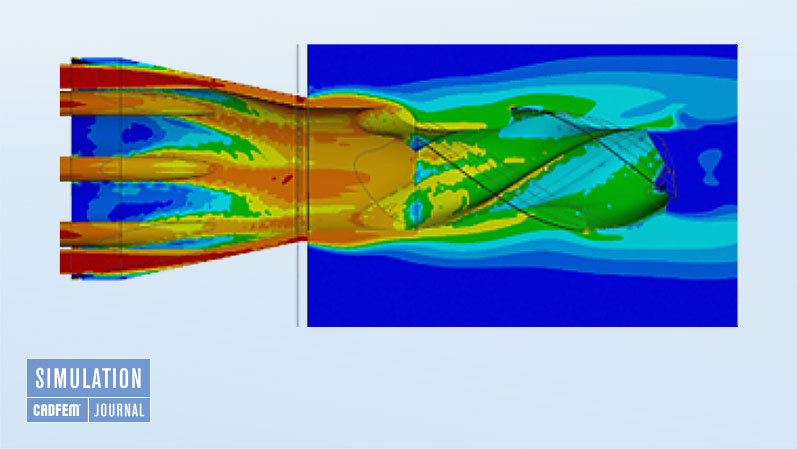
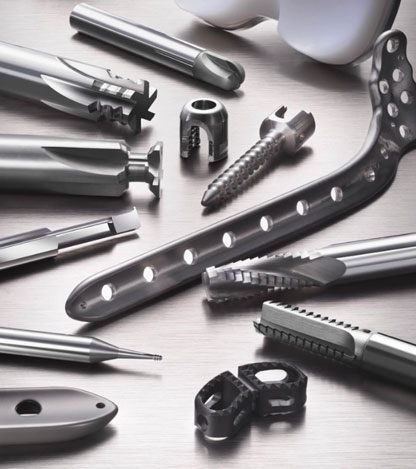
An innovative family business
DIXI Polytool relies on a strong R&D team to serve many industrial sectors by offering innovative solutions. For the past few years, it has been offering a revolutionary patented technology that has led to the creation of the "DIXI COOL+" category of tools, which considerably improves the management of the fluid towards the cutting edge. It is in this perspective of continuous improvement of cutting tool performance that DIXI Polytool has relied on quasi-instantaneous simulations offered by Ansys, with support from CADFEM.
Increase productivity by improving lubrication
During processing, the material is sheared off and then slides towards the cutting surface, generating a high level of friction on it. Without lubrication, the heat generated by the machining process quickly becomes too great and leads to the deterioration of the cutting edge, or even its destruction. One of the major roles of the lubricant is to reduce the friction of the chip on the cutting face, but also to dissipate the heat generated by chip formation. For best results, the lubricant jet must be directed precisely at the interface between the chip and the cutting surface and must also have optimum pressure and velocity. This way, the lubricant will effectively dissipate the thermal energy generated, reduce the frictional forces on the cutting face and ultimately reduce cutting times. Controlling this process is both a technical and commercial challenge, allowing us to stand out from the competition.
The solution adopted by DIXI Polytool is the integration of the patented "Cool+" coolant system at the interface between the chip and flute face. This is made easy by the use of a coolant hole towards the flute, through which high speed lubricant flows.
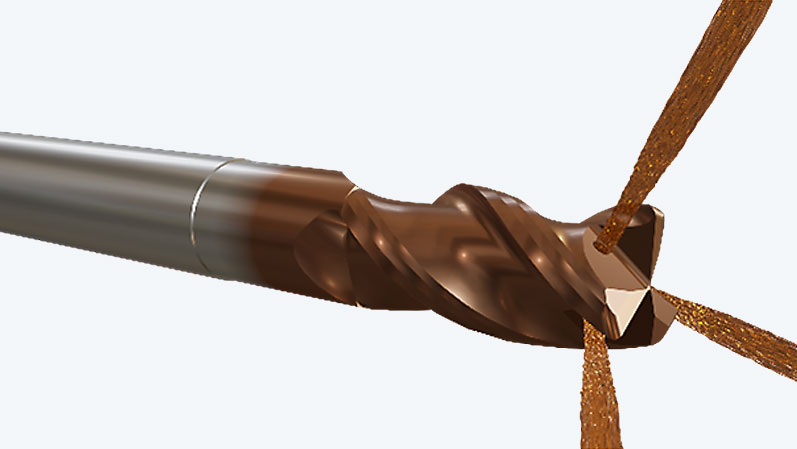
However, this solution is not applicable for small milling tools (Ø<6mm) because the size of the internal lubrication hole causes too much stress in the milling cutter, leading to immediate breakage as soon as the tool is machined. To overcome this problem, some cutting tool manufacturers use external coolant channels. This solution already improves the performance of milling tools.
DIXI Polytool had the idea of improving this system by adding a ring at the outlet of the spray channels, thus allowing acceleration and concentration of the fluid towards the cutting zone.
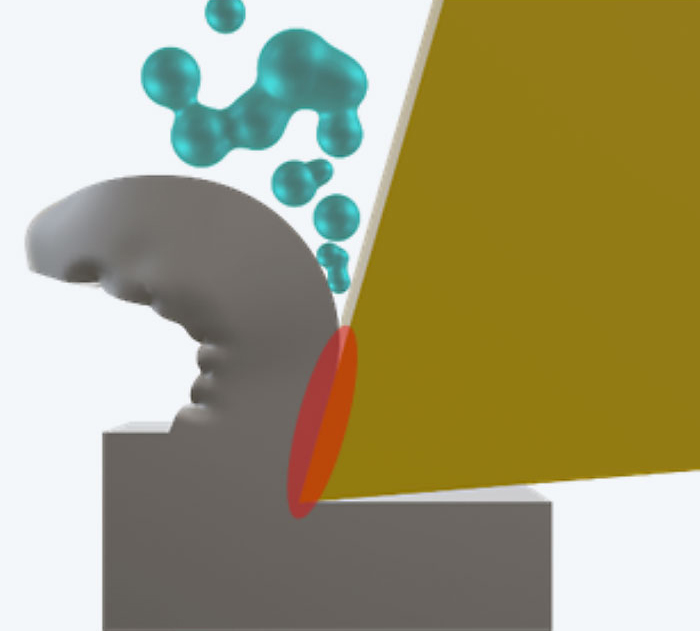
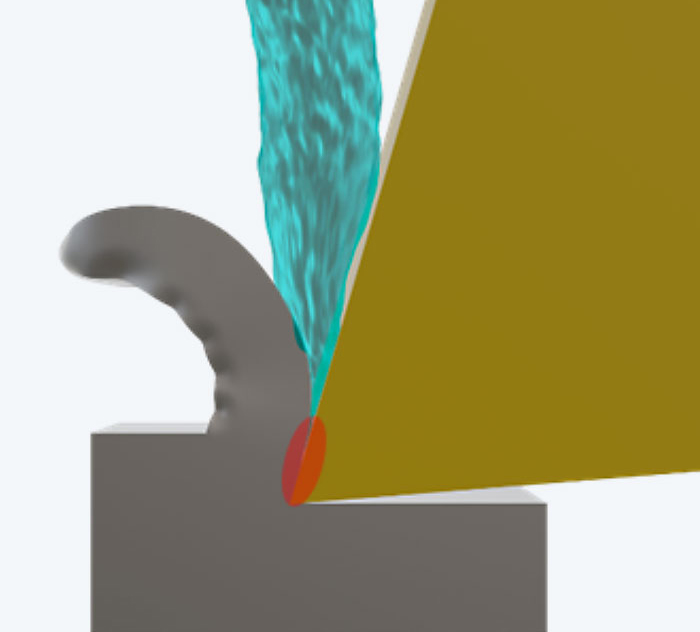
Simulation has helped DIXI Polytool to develop new tools
While it is relatively easy to measure the performance of one tool compared to another, it is much more difficult to understand the reasons why and find ways to improve it. Chip formation and chip evacuation are complex phenomena to understand, especially when lubrication is used. Software is available to simulate chip formation and stress distribution on the tool. This software is very expensive and does not always give the expected results. Using high-speed lubrication makes these simulations complex and unrealistic. By using Ansys Discovery, DIXI Polytool's R&D team was able to compare different solutions quickly and cost-effectively. The advantages of adding the ring to the outlet of the spray channels were demonstrated. Ansys Discovery was able to show that the ring system not only accelerated the fluid under certain conditions, but also allowed a much higher cutting speed than without the ring. The images obtained from the software simulation also support the technical documentation, making it easier to promote this solution to DIXI Polytool's customers.
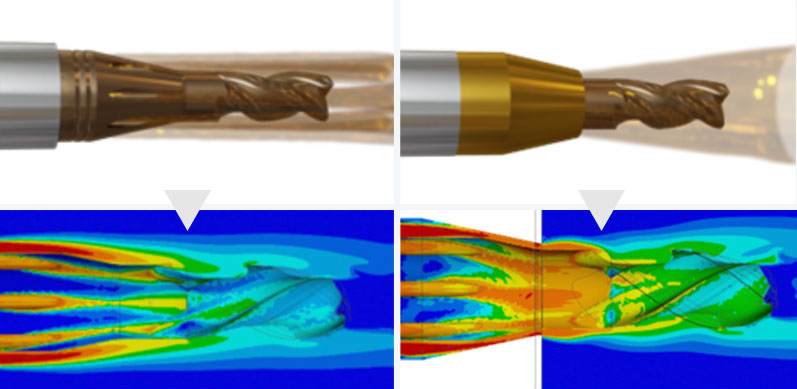
Geometry improvement
Determining the optimum geometry is also a key parameter for obtaining a high-performance milling tool. While the maximum chip rate in slotting and contouring are the criteria usually considered, the performance of the plunge milling tool is often ignored. However, a high-performance plunge tool can reduce cutting times and improve productivity, especially in materials with difficult machinability. For the creation of two new toric families (DIXI 7353 and 7453), the R&D department wanted to improve the performance of the current plunge geometries. To do this, various end grinding geometries were tested on physical prototypes with sometimes contradictory results. For an optimal design, the R&D department compared different end grinding solutions using the finite element method. The simulation made it possible to analyze the stresses undergone by the milling cutter during the axial plunge. The result of the simulation is indisputable: symmetrical sharpening is clearly more resistant than conventional sharpening.
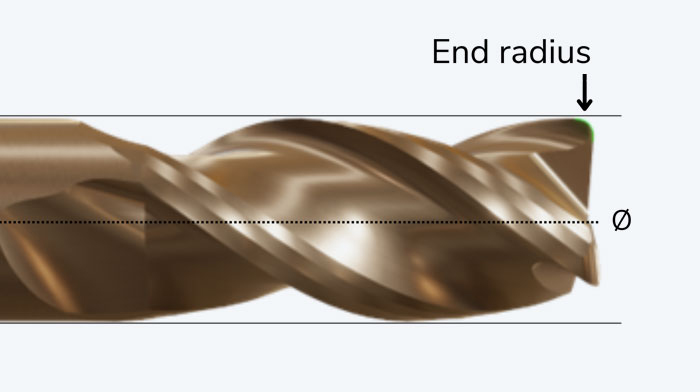
In addition to the dynamometer table, which measures the cutting forces, the analyses carried out by ANSYS discovery made it possible to determine which geometries were subject to the least stress as well as finding the parts where the stresses were the highest.
To validate these analyses, the R&D department carried out machining tests by comparing two geometries – conventional grinding and symmetrical grinding. These theoretical analyses were confirmed for models with a radius/diameter ratio of 25.
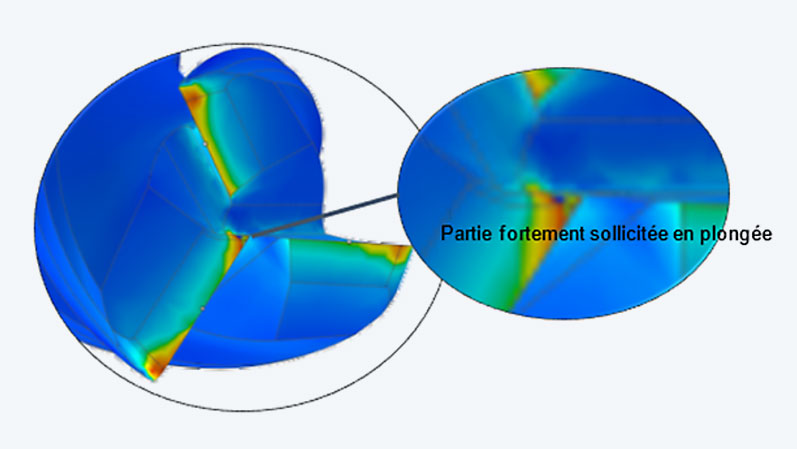
The link between simulation and business advantage for DIXI Polytool
Ansys Discovery is a unique tool for making geometry modifications and performing FEM or CFD simulations quickly. This solution allows product developers to quickly and accurately design, experiment and validate their ideas. For DIXI Polytool, Ansys Discovery has made it possible to numerically test different parameters without going through numerous experimental testing phases. The latter did not allow the R&D team to precisely determine which factors influenced the results. Today, the characterization of these factors is particularly useful because they provide avenues of improvement for further products. By incorporating simulation into the development process from the beginning and relying on CADFEM's support, DIXI Polytool has reduced costs and development times while obtaining reliable answers to offer its customers the best performing solutions.

DIXI POLYTOOL SA
www.dixipolytool.ch
Author: Christophe Ozier-Lafontaine (CADFEM GmbH)
Images: © DIXI POLYTOOL
Published: September, 2022
Contact CADFEM



